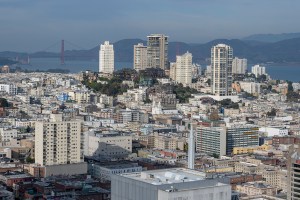Rents increase for the second consecutive month this year, to $1,725, $2 short of the all-time high recorded last summer, Yardi Matrix notes.
Report highlights:
- The U.S. average asking rent rose $6 to $1,725 in April, up 0.7% year-over-year.
- Rent growth was even across asset classes, up 0.3%.
- In Q1, 72,800 units were absorbed nationally, the strongest Q1 since 2021.
- Single-family rents rose 1.3% year-over-year through March to $2,154.
Rent increases continue
The U.S. average asking rent increased 0.7% year-over-year through April, up $6 to $1,725. The gain represents a $12 year-to-date rise, and sits just $2 below the $1,727 all-time high recorded in the summer of 2023. Household formation bolstered demand, sustained by the strong job market, immigration and ongoing migration to the South and West. Occupancy remained flat at 94.5% in March, a rate held throughout the entire first quarter.
Rent growth remained highest in metros in the Northeast and Midwest, led by New York City (4.6% year-over-year), Columbus (3.8%), New Jersey (3.5%) and Chicago and Kansas City (both 2.9%). Among Yardi Matrix’s top 30 metros, rent contractions greater than 3.0% were registered only in Austin (-6.5%) and Atlanta (-3.4%). By asset type, Lifestyle rents declined 0.6%, while RBN rents rose 1.9%. Occupancy declined in 28 of Yardi Matrix’s top 30 metros and fell below 93% in Atlanta (92.4%), Houston (92,6%), Las Vegas (92.7%) and Austin (92.8%).
On a monthly basis, rents rose 0.3% in both RBN and Lifestyle property segments. Gains were led by Boston (1.1%), Detroit (0.9%) and Philadelphia (0.8%) and the largest losses were recorded in Austin, Tampa and Raleigh (each down 0.3%). New Jersey led in Lifestyle and Nashville in RBN, each up by 1.2%. The largest declines in both segments were posted by Austin (-0.2% in Lifestyle and -0.4% in RBN) and Raleigh (-0.1% in Lifestyle and -0.8% in RBN).
Renewal rent growth stood at 4.4% in March, 80 basis points from February and 660 basis points from the peak in August 2022. The highest renewal rent growth rates were in Columbus (10.0%), Kansas City (9.4%) and Miami (7.7%). The rate declined in San Francisco (-0.6%), Austin (-1.4%) and Los Angeles (-15.4%). The national lease renewal rate averaged 65.8% in March, highest in New Jersey (82.6%) and lowest in San Francisco (53.5%).
Solid absorption points to steady demand
During Q1, 72,800 units were absorbed nationally, which although far behind 2021’s peak level of 620,000 units, it places the market on a good track to outperform 2022 and 2023. Highest absorption volumes were registered in the Southwest (18,000 units) and secondary metros (47,100 units), while by market leaders were Dallas (5,800 units), Houston (4,200 units), Phoenix (3,700 units), Northern New Jersey (3,300 units) and Charlotte (2,900 units). By percentage of stock over the 12 months through Q1, the ranking of large metros with highest absorption was just slightly different: Nashville (4.2 percent), Charlotte (3.9 percent), Phoenix (3.5 percent), Miami and Austin (both 3.3 percent) and Raleigh-Durham (3.2 percent). California markets San Diego, San Jose and the Inland Empire lagged all other metros.
SFR financing picking up
The national asking rent for single-family rentals rose $9 in April to $2,154, up 1.3% year-over-year. Occupancy was at 95.4% in March, at 96.6% for RBN and at 95.0% for Lifestyle. Financing in the segment is rising, which indicates rebounding investor confidence. During Q1, SFR operators securitized $1.9 billion of loans, which is already more than half of last year’s full-year total of $3.6 billion. Progress Residential led in loan issuance as of April with $1.3 billion across two deals, followed by Vine Trust ($352.6 million) and Tricon Residential ($297.2 million), according to Asset-Backed Alert.
Read the full Matrix Multifamily National Report-April 2024.









Add Comment